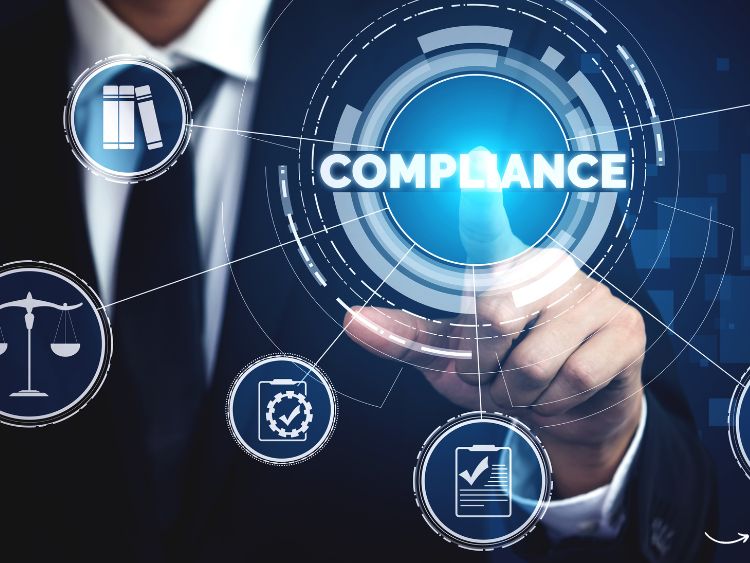Corporate compliance centers are becoming increasingly vital in today’s complex regulatory landscape. They ensure that organizations adhere to legal standards and internal policies, thus protecting them from potential risks and penalties. In this article, we’ll delve into the ins and outs of corporate compliance centers, highlighting their importance, functionalities, and how they can benefit your business.
Navigating the regulatory minefield can be daunting for any business. That’s where a corporate compliance center comes into play. But what exactly is a corporate compliance center, and why is it crucial for your organization? In this comprehensive guide, we’ll break down everything you need to know, from the basics to advanced strategies, ensuring your business remains compliant and thrives in a competitive market.
What is a Corporate Compliance Center?
A corporate compliance center is a dedicated department or a set of tools designed to ensure that a company adheres to external regulations and internal policies. This hub of compliance activities encompasses a range of tasks, including monitoring regulatory changes, conducting audits, and providing training to employees.
Why is a Corporate Compliance Center Important?
- Regulatory Adherence: Staying up-to-date with ever-changing laws and regulations.
- Risk Management: Identifying and mitigating potential risks before they escalate.
- Reputation Management: Maintaining a positive public image by ensuring ethical practices.
- Operational Efficiency: Streamlining processes to ensure smooth compliance operations.
Key Functions of a Corporate Compliance Center
1. Monitoring Regulatory Changes
Keeping track of new and updated laws is one of the primary functions. The compliance center must ensure that the organization adapts to these changes promptly.
2. Conducting Audits
Regular audits are essential to verify that all departments are following the established guidelines. These audits help in identifying areas of non-compliance and implementing corrective measures.
3. Employee Training
Employees must be well-informed about compliance requirements. Training sessions, workshops, and e-learning modules are some ways the compliance center educates staff.
4. Reporting and Documentation
Maintaining detailed records of compliance activities is crucial. This documentation can serve as evidence during inspections and audits by regulatory bodies.
Setting Up a Corporate Compliance Center
Step 1: Assess Your Needs
Before establishing a compliance center, assess your organization’s specific needs. Consider the size of your business, the industry you operate in, and the regulatory environment.
Step 2: Define Roles and Responsibilities
Clearly outline the roles and responsibilities of each team member. This structure ensures accountability and efficient operation of the compliance center.
Step 3: Develop Policies and Procedures
Create comprehensive policies and procedures that align with regulatory requirements. Ensure these documents are easily accessible to all employees.
Step 4: Implement Compliance Tools
Leverage technology to streamline compliance activities. Compliance management software can automate tasks such as monitoring regulatory changes, conducting audits, and managing documentation.
Step 5: Provide Ongoing Training
Regular training sessions are crucial to keep employees updated on compliance requirements. Use a mix of in-person workshops and online courses for maximum impact.
Benefits of a Corporate Compliance Center
1. Reduced Legal Risks
By proactively managing compliance, companies can avoid hefty fines and legal actions. The compliance center acts as a safeguard, ensuring all operations adhere to legal standards.
2. Enhanced Reputation
A robust compliance program demonstrates a company’s commitment to ethical practices. This commitment can enhance the organization’s reputation among clients, investors, and regulatory bodies.
3. Improved Efficiency
Streamlined compliance processes lead to improved operational efficiency. Automated systems and clear guidelines reduce the time and effort required to maintain compliance.
4. Better Decision-Making
Access to real-time compliance data enables informed decision-making. Management can swiftly address compliance issues, minimizing their impact on the business.
FAQs
Q1: What are the key components of a compliance program?
A: The key components include risk assessment, policy development, training, monitoring, and auditing.
Q2: How often should compliance audits be conducted?
A: Compliance audits should be conducted at least annually. However, more frequent audits may be necessary in high-risk industries.
Q3: What role does technology play in compliance management?
A: Technology plays a crucial role by automating tasks, providing real-time updates, and maintaining detailed records.
Summary
In summary, a corporate compliance center is essential for any organization aiming to navigate the complexities of modern regulations. By monitoring regulatory changes, conducting audits, providing training, and maintaining thorough documentation, a compliance center ensures that your business remains compliant, reduces legal risks, and enhances its reputation. Investing in a corporate compliance center is not just about avoiding penalties—it’s about building a resilient and trustworthy organization.


